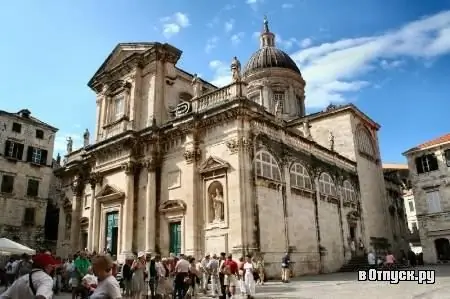
Description of the attraction
One of the attractions of Dubrovnik's Old Town is the majestic Baroque Cathedral of the Assumption of the Virgin Mary, designed by the Roman architect Andrea Bufalini. A number of architects invited from Italy were involved in the construction of the church. Some of them refused to work, being dissatisfied with the delay in salaries. The construction of the temple lasted from 1672 to 1731. The last architect who completed all the work on the church was the local master Ilya Kalchich.
The Dubrovnik Cathedral is steeped in legends. The most striking of them tells that on the site of the present church there was previously a temple that was built by Richard the Lionheart himself. It seems that he landed on the local coast, returning from the Third Crusade. That old church has not survived: it was destroyed by an earthquake in 1667. However, historians claim that King Richard the Lionheart had nothing to do with the ancient temple. Fragments of the old church foundation date from an earlier period. Richard the Lionheart came here only a few decades after the appearance of the church.
Several of the most valuable works of art are kept in the Cathedral. The altarpiece "The Dormition of the Theotokos", created by Titian himself, deserves special attention. It was acquired for the temple by the local Brotherhood of Lazarini. It consisted of wealthy townspeople. In the western part of the nave, you can see the sculpture of the Virgin, which, as the locals believe, has the ability to cause rain. She was taken out into the street in a drought and carried through the city.
A collection of church art is displayed in the sacristy of the cathedral. Here in the reliquary are kept details of the relics of St. Blaise.






